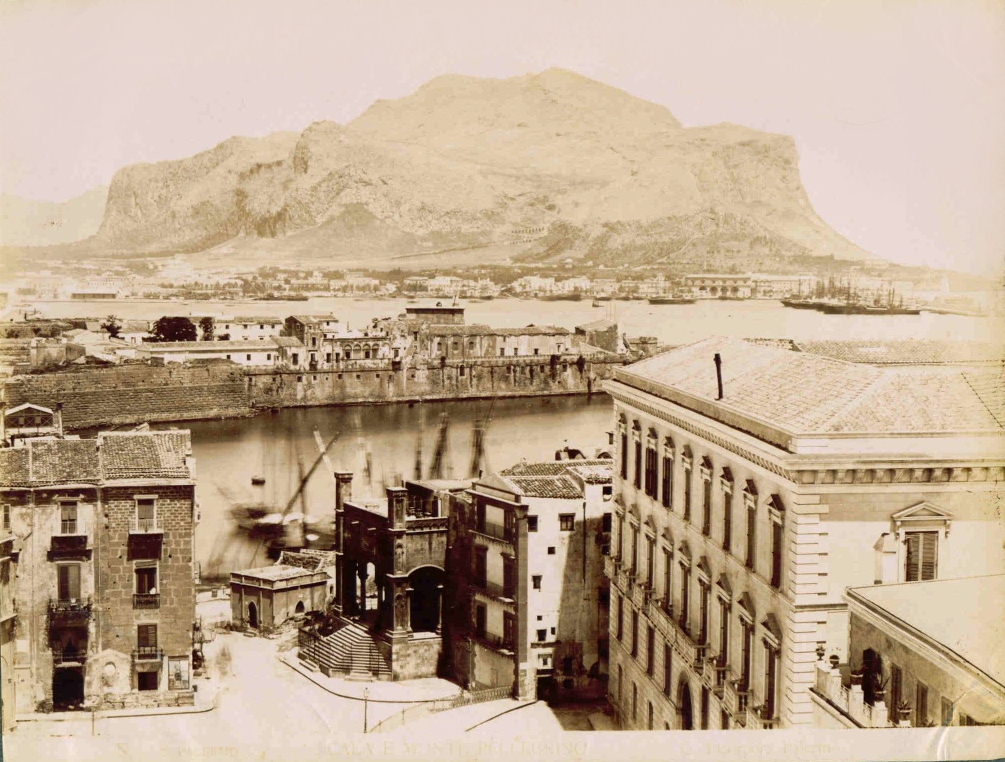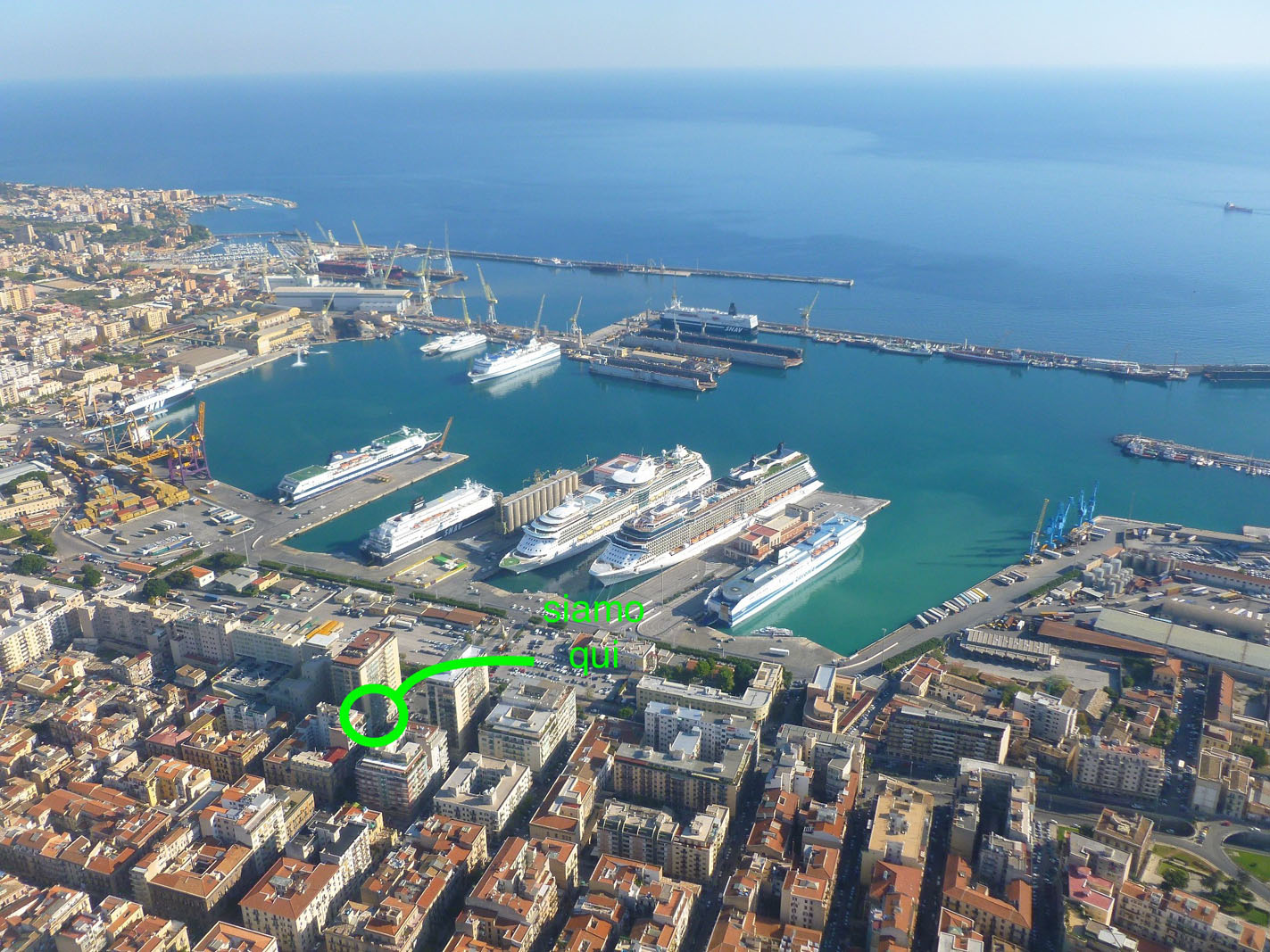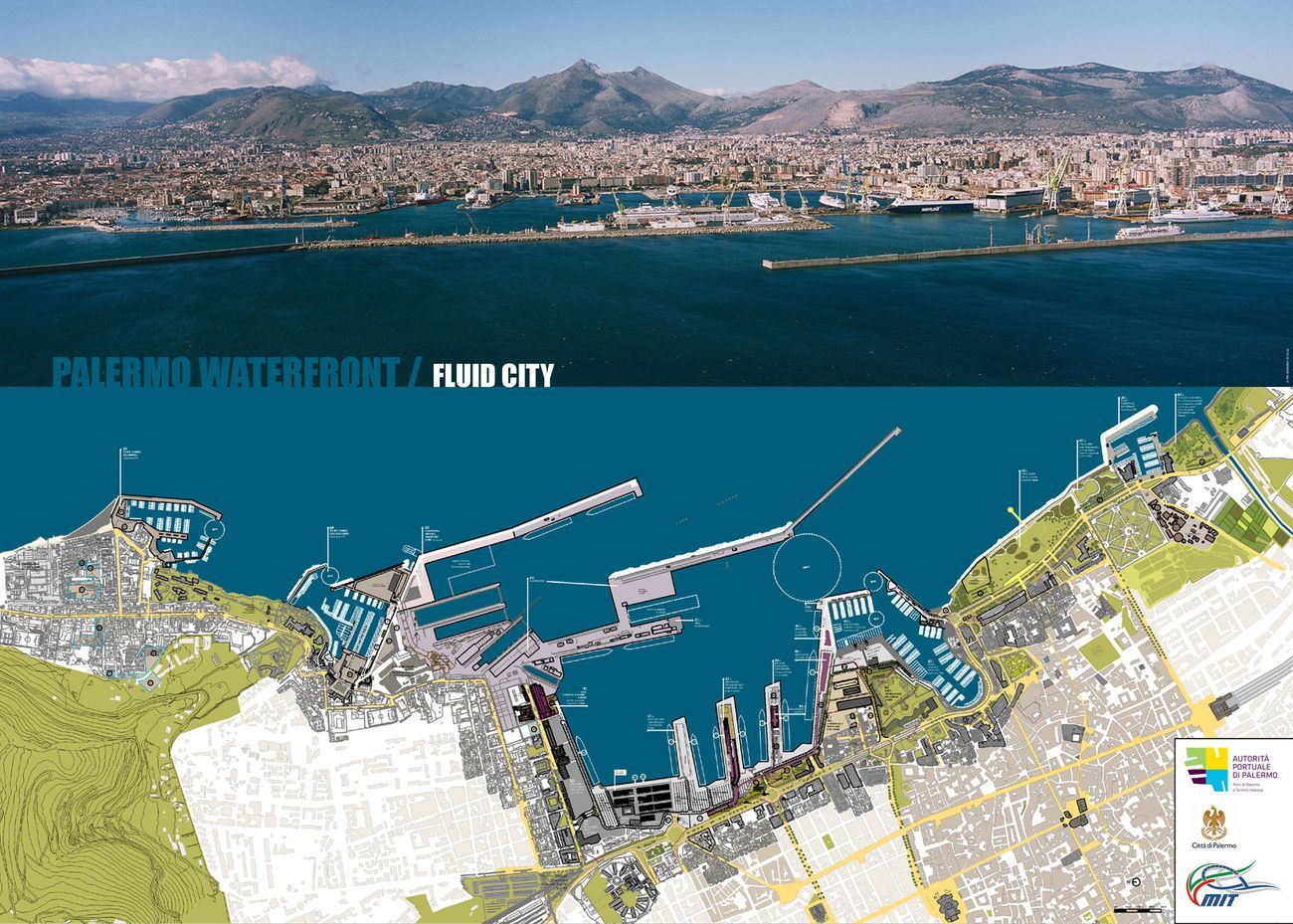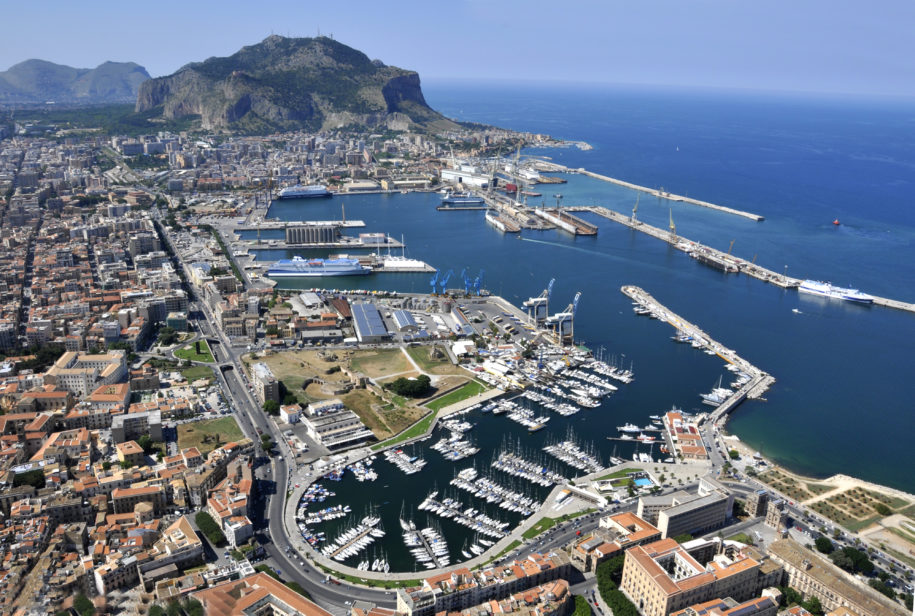Origins of the of Palermo harbor
The origins of the port of Palermo overlap with those of the city, because it was precisely the port that was the central fulcrum of the city’s development. The Phoenician navigators, who founded it, chose it for the shape of its inlet and the Greeks called the city Panormos, that is “all harbor”. It was the center of trade for the Phoenicians, the Carthaginians, the Romans and the Arabs, during the Muslim domination of Sicily.

Past
The present port of Palermo sees its birth in 1567 on the will of the Viceroy of Sicily Garcia de Toledo when the ancient port of the Cala becomes insufficient and too narrow for the growing city needs. Being the south side of the Cala occupied by the promenade of the marina, the north side of the city was chosen as the place of development for the new port in the new district of Santa Lucia (the present old Borgo), founded by Carlo d’Aragona Tagliavia in 1570 , which, depending on the port, then went on to develop a typically maritime character. [1]
In 1590 when the work on the New Pier was completed, a memorial stone was placed at the entrance of the port in memory of the construction. The cippus, surmounted by the Palermo eagle, presents on one of the four sides the coat of arms of the Viceroy Garcia de Toledo, and on another side the oldest existing representation of the Genius of Palermo.
The area of the port went more and more expanding towards the North with the creation in the XIXth century of the shipyards until reaching the port of Acquasanta.
In the early twentieth century it was connected by a railway to the central station, this track was subsequently eliminated and a wider and underground connection was created in order to connect also the Notarbartolo station.
In the First World War, the 3rd Seaplane Section was created in June 1917 with 3 FBA Type Hs which became the 270th Squadron from 27 March 1918.

Present
It is connected with regular services of ferry-boats with Naples, Livorno, Cagliari, Civitavecchia, Genoa, Tunis and in a less frequent way with several other Italian places and of the Mediterranean basin. It is also connected by hydrofoils to the Aeolian Islands and the island of Ustica. It also houses a considerable traffic of goods with the movement of containers coming from Via Gioia Tauro, from all parts of the world and destined for the entire Sicilian territory. Inside the port there are the shipyards of Palermo, among the few existing in the southern Mediterranean. The shipyards are owned by Fincantieri, which reserves the task of building and renovating passenger and freight ships for the Palermo shipyards. It is one of the most important ports in the Mediterranean for cruise traffic.

Future
The new Port Regulatory Plan has been recently approved, which foresees the development of the port in the next ten years, in this plane there is a near-discontinuation of the freight sector that will be moved to Termini Imerese, while the port of Palermo will develop in the tuberistic and cruise sector . In particular with the creation of a large urban archaeological park, marine clubs, the elimination of the barriers that separate it from the city, the rebuilding of internal but also external roads and a new modern maritime station. As far as the external connections to the port are concerned, the creation of a tunnel is foreseen which, passing the port to the ring road, also includes two roundabouts at the port entrances and a metropolitan train service station.
Source: WIKIPEDIA

